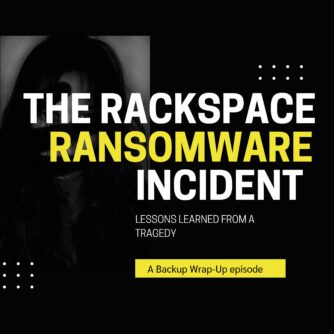Netex is the final company that I’m going to blog about that I learned about on Tech Field Day 5. Their goal is to make it much easier to stream large amounts of data over TCP/IP. Customers using their optimization software (that runs as a virtual machine) are able to fully utilize their WAN connections, instead of using 50% or less of a typical connection.
The Hyper IP product does this by converting TCP streams to UDP streams, then ordering and compressing those streams but frankly that’s about all I can explain. Hey, I’m a backup guy not a network guy. What I can say is that the numbers and technology seemed to really impress the network guys.
This product does not qualify as a full bandwidth optimization product, because it’s missing one feature that isn’t important to those who are doing backup/replication tasks. But if what you’re doing is remote replication or backups of any kind over a WAN connection, it seems like they’re the low-cost, highly-functional alternative to those products. They had plenty of stories of customers who already had much more expensive bandwidth optimization products opting to use their product for one project — only to end up using it for several projects.
At one time these guys only worked over leased lines, but now they work just fine over Internet connections. Also, in case you’re wondering — unlike bandwidth optimization products — they work just fine with any deduplication product.
I’d recommend that any customer doing replication over a WAN look into Netex’s Hyper IP product.
Written by W. Curtis Preston (@wcpreston), four-time O'Reilly author, and host of The Backup Wrap-up podcast. I am now the Technology Evangelist at Sullivan Strickler, which helps companies manage their legacy data







Think about this.. a 100Mb link with 30ms latency, just made that link about 16Mb! Add in a 1-2% of packet loss, and that same 100Mb link is now about 2Mb. just the way of life with TCP.
Using UDP somewhat solves the issue, but has its own flaws. (unless the vendor puts in some type of re-transmit to protect against dropped packets). UDP is often used in multi-media streaming. Or there was the now defunct company that the Netgear “toaster,” was based on from Zetera. Block based storage over UDP, without the complexities or cost of iSCSI.
Products like Silver-Peak’s WAN accelerator (not to be confused with Riverbed) actually help with TCP and dropped packets (according to them)
In the end, I often giggle inside when folks brag about their pipe across states, with no WAN optimization products in place. Latecy/packet loss is the great equalizer!
Thanks Curtis,
Are you telling me the BDP (beer delivery protocol) didn’t help? Briefly, why it works is because it was designed to perform over satellite links. As long as the application can deliver the data, HyperIP continually monitors/uses the receiver rate feedback and round-trip-time to calculates the pipe size and then attempts to fill it.
Mitch, I agree that latency/packet loss is the great equalizer. HyperIP does more than convert TCP packets to UDP. HyperIP does guarantee packet delivery (retransmit drops) so it manages WAN packet loss effectively hiding these from the TCP stack. It also monitors the remote HyperIP receiving rate and latency to identify congestion to be TCP-friendly in the network.